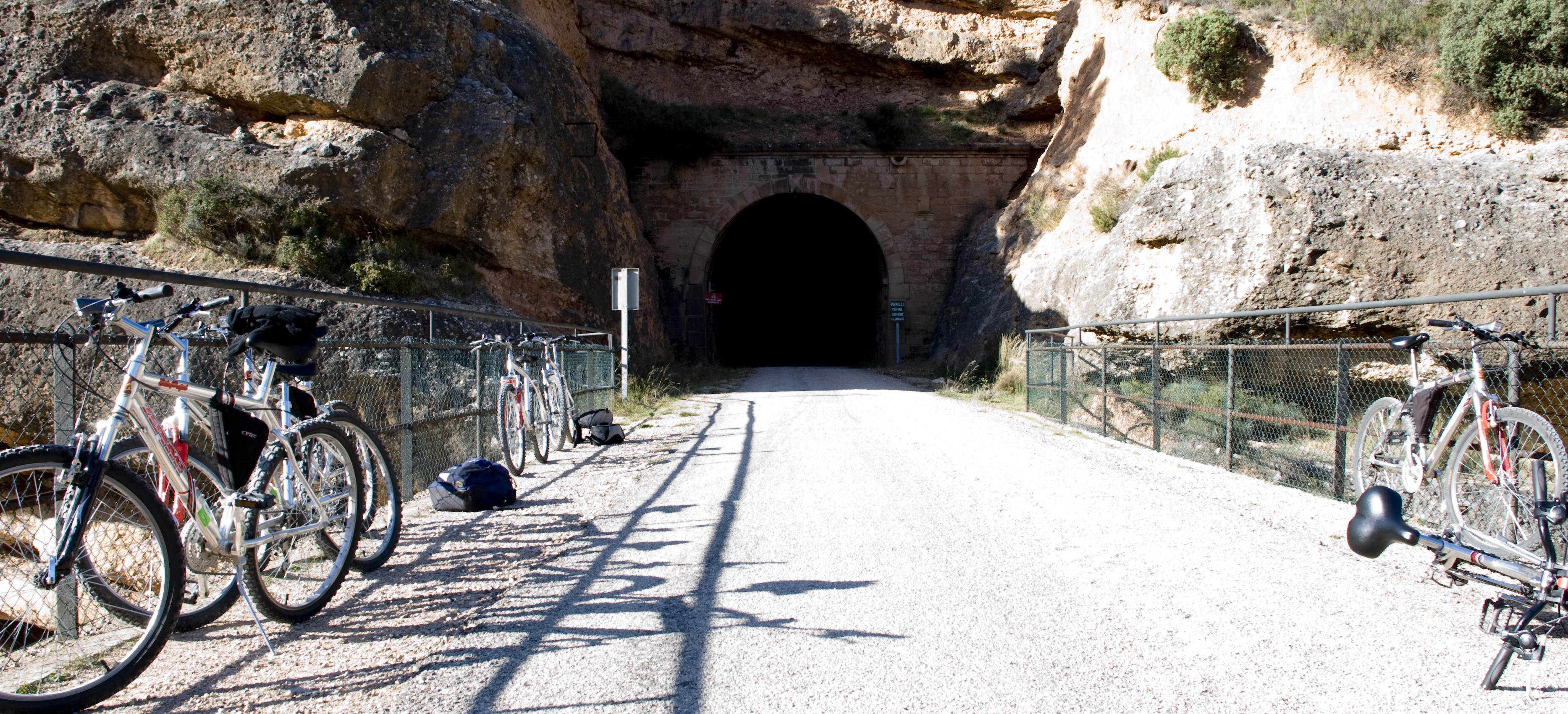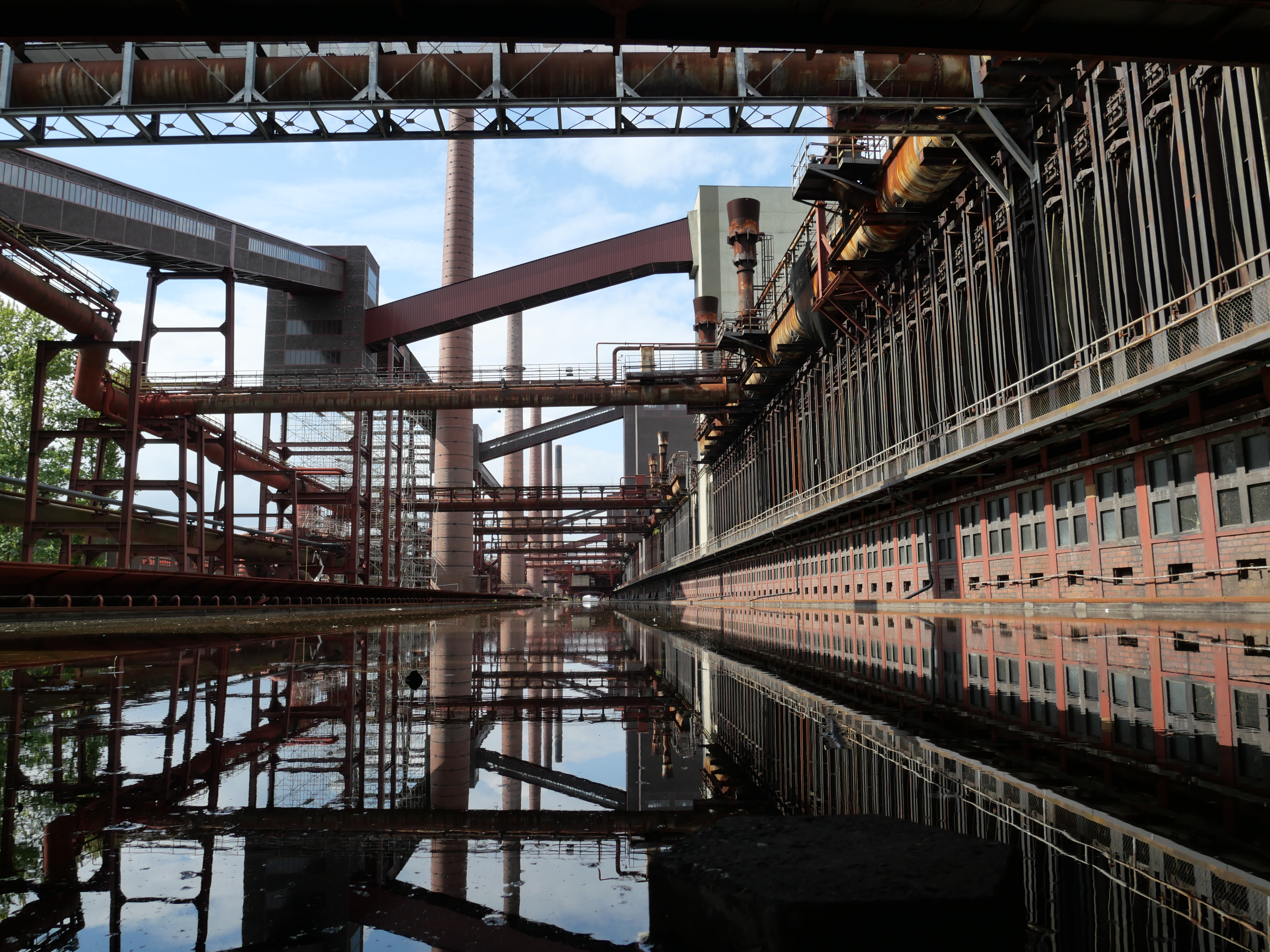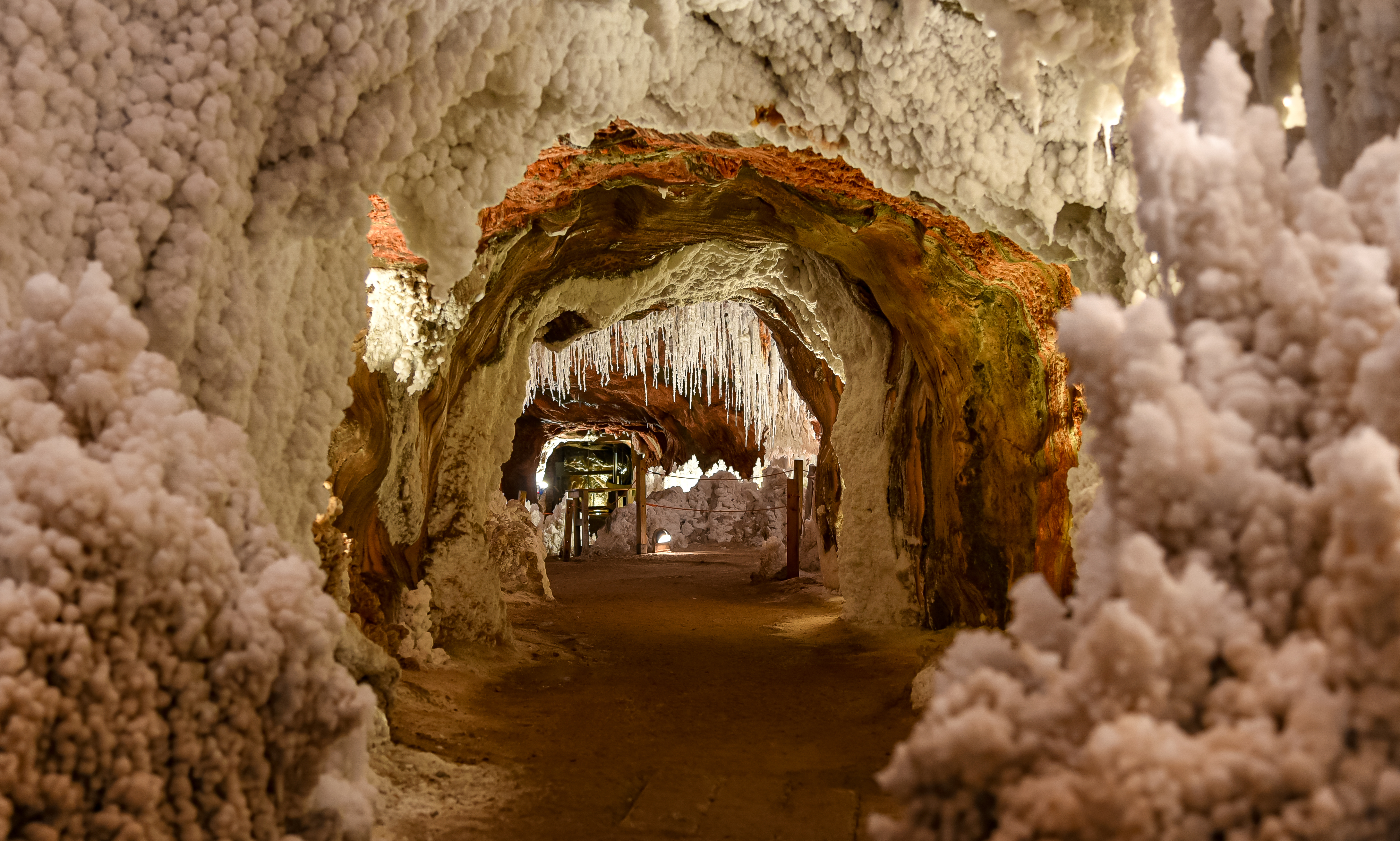14-08-2020
Industrial tourism: engine of change?
Núria Abellan | Alba SudIn the current context of growing interest in proximity tourisms, industrial tourism becomes an opportunity to foster social and economic transformation of territories distant from the touristic centres, as well as recuperating collective memory.

Photography by: Train of the Lakes (Lleida-La Pobla de Segur), Catalonia. Source: Aleix Cortés, under creative commons license.
The debate on proximity tourisms has grown stronger during the current COVID-19 pandemic, as it has been previously covered in Alba Sud with phenomena such as staycation or slow tourism. In this framework of analysis, which leads to socially rethinking tourism for its transformation and the touristic policies, fiercely appears the possibility to also boost industrial tourism. It encompasses any form of spatial mobility provoked by the motivation to visit systems and industrial landscapes, active or disused (Soyez, 2014). Therefore, industrial tourism includes musealised industrial facilities; industrial constructions with uses that are no longer related to production processes; and workshops, shops and factories that are currently active and allow the visitor to get to know the process of fabrication of the product, a proposal known as Life Industry. It is a touristic typology diverse in geographical distribution, modality, topic and dimension of the facilities available to visit.
For years, the industrial landscape has been considered ugly, dirty and lacking aesthetic value, especially without any touristic value, those being characteristics extremely opposed to what is considered attractive to visit, ideas that for a long time have circled strict ideas of culture, beauty and masterpieces (Soyez, 2014). Due to its progressive putting in value, these facilities have gained relevance as spaces of memory that are established as a collective legacy of great historic, esthetical, symbolic, and identity. At the same time, aspects such as changes on diverse territories deriving from the Industrial Revolution have been emphasised, as well as residential centres built for industry factors as a consequence of migratory flows, or structures such as harbours, railways and maritime canals (Observatori del Paisatge, n.d.). Therefore, apart from physical evidence where industrial tourism takes place, part of its importance resides on understanding it as an integral system, which unites landscape, the industrial relations, architecture, the techniques used, the manifestations of symbolic nature and the experiences of those involved, for which reason, they constitute the collective memory of the communities (Guzmán et al., 2016). On the other hand, there iniciatives such as Recovered Spaces (Espais Recobrats), which put the emphasis on the conservation of the industrial heritage through the change of its uses (Álvarez, 2007).
Aspects of industrial tourism
Four main aspects of industrial tourism allow us to understand the need to boost it as a touristic option that escapes from hegemonic discourses, either in the current perspective of renewed interest for proximity tourisms and also when thinking of it to reformulate changes in the tourism system as we know it.
Firstly, it is a tourism typology that emphasises economic sustainability, as it allows for the revalorisation and diversification of areas of the territory that are usually further away from the classic tourism poles. The economic transformation of these spaces is based on the implication of diverse agents in the functioning of industrial tourism. In a direct tourism aspect, services as catering or touristic accommodations are included. On the other hand, indirectly, tasks related to culture and heritage are retaken, as historic research, restoration and conservation of the facilities, cultural intermediation and, in some cases, cultural programming, according to the role the facilities acquire.
As previously mentioned, industrial tourism may take place in urban areas and in rural spaces, being the latter the territorial context where economic diversification becomes more apparent. An example of putting in value of an ancient industrial heritage in the rural area which has involved the creation of a touristic platform are the Green Paths, an initiative that consists of the recuperation of railways that have been out of use for decades to adapt them for bikers and hiking. Green paths are a proposal widely implemented throughout Occidental and North Europe with a growing number of users with interests and ages of great variation. In the case of Catalonia, there is Vies Verdes de Girona, which can be found all over the province of Girona and part of North Catalonia, thus boosting cyclotourism. Due to the creation of these routes, diverse gastronomic, accommodation, renting and transfer services and travel agencies proposals united to complement the offer.

A section of a Green Path in Terra Alta, Catalonia. Source: Adrià Ariste Santacreu, under creative commons license.
On the other hand, the transformations of the urban landscape have often turned into the simplification of the streets in the cities, especially during the process of deindustrialisation, through enhancing aspects that were considered adequate to visit and, thus, the expulsion of what is not considered heritage, as might have been the case of workshops and production centres that have had vital importance through the years, in a selective and excluding construction of the cities (Sobrino, 2016). In this sense, the debate on transformation and uses of heritage may have a deep influence on the preservation of industrial heritage, which is mainly studied in three situations (Martí-Costa, 2010). Firstly, a modern city that takes into account its industrial remnants and does not incorporate them into its landscape nor discourse. Secondly, a hypermodern city that fragments, privatises and recreates the industrial heritage as a simulation. Thirdly, a city that is respectful with the past of its heritage and the place it occupied and occupies, and that considers the collective needs of its inhabitants (Martí-Costa, 2010). It becomes a key aspect to enhance the link between unionism and the labour movement is enhanced in the industrial tourism that takes place in urban areas, in order to ensure the historic conscience to understand the past and its inevitable repercussion in the present and the future (Tébar and Jimeno, 2019).
Secondly, industrial tourism is combined with ethnography to discover the past of the territories where it takes place. Through anthropological techniques, it is possible to understand the evolution of the territories and its population since the preindustrial times until the present. Therefore, industrial tourism stimulates social investigation in areas where it has taken place, which leads to the recuperation of the collective memory and the comprehension of its present. Industrial heritage leads us closer to the lives and the labour conditions of thousands of people, for which reason it allows to shed light upon aspects such as the class and gender biases existent in that moment and, often, currently reproduced.
Thirdly, special attention needs to be given to the segment of industrial tourism. This niche of tourism has few specialised tourists, that is, visitors that exclusively look for industrial tourism experiences or that this is their main motivation to initiate a journey. On the other hand, it has a lot of public among family groups, which are intergenerational (Jansirani, 2013) and that mainly develop proximity visits. Moreover, industrial tourism has an important following among students, either from younger stages up until professional studies. The diverse options offered by industrial tourism favour the performance of activities with scholar public adapted to each level of students, from concrete explanations to workshops that allow to put into practice the acquired knowledge and relate them with the pedagogical objectives of each stage. This way, industrial heritage is understood not solely as an object of study, but rather as a formative subject in the scope of technological evolution and technical learning, among others (Tatjer, 2008).
Finally, in the fourth place, one of the aspects of industrial tourism that has gained more importance over the years is the Life Industry, based on developing visits in factories, facilities, workshops and shops that are currently active and show their productive process to the public. This type of visits allows to enter the creative processes according to the logic of the theory proposed by Olaia Fontal (2013), affirming that those individuals that have no knowledge, comprehensive key, respect pattern or value suggestion, will never recognise a heritage, will not be sensitive to it nor will they give it importance. For this reason, this same author proposes a sequence oriented to gaining sensitivity towards heritage, which consists of the following consecutive circle: knowledge on heritage for its comprehension, attributing value, symbolic appropriation, conservation, enjoyment and transmission.
The practical application of this theory in the sector of Life Industry means an increase in the loyalty of the visitor. As they have witnessed the production process and deeply understood it, these visitors show more inclination for the brand, factory, workshop or product later on. This fact proves that the knowledge obtained through the observation of the productive process is more relevant for the visitors than aspects as price, marketing, or the distribution of a product. Therefore, industrial tourism would tend to boost local production, as well as the consumption of km 0 products. On the other hand, the possibility to develop these visits, helps the businesses to maintain the quality standards, as ISO 13810:2015, which regulates visits to productive spaces, taking into account that visitors are received in every stage of the creation process.
Current situation of industrial tourism
Industrial tourism is especially strong in a European scale, a continent where it is articulated through the European Route of Industrial Heritage, a network created in 1999 with the union of United Kingdom, Belgium, Germany and the Netherlands through the funding of the programme Interreg IIC. In 2014, this project received funding from the Creative Europe Programme, and in 2019 it was included in the Cultural Route of the Council of Europe. The creation of the network, with nowadays includes the vast majority of European countries, based on the idea of situating the Industrial Revolution as a historical event that sparked major social, economic, cultural and landscape changes.

Ruhr Mining Area, Germany. Source: Lynne Hand, under creative commons license.
Despite this European initiative, which aims to unify proposals variating in topic and size under a common umbrella, truth is that traditionally, industrial tourism has had variating followers in each country. Although it does not fully coincide with the countries that initiated the European Route of Industrial Heritage, the three countries that have had a greater inclination towards it through the years have been France, United Kingdom and Germany, which coincide with the pioneer regions of the Industrial Revolution. Internally, each country has different mechanisms to manage its industrial heritage in its tourism field.
In France, the heritage spaces are managed by the Ministry of Culture, while Life Industry is boosted by the diverse Regional Chambers of Commerce under the seal of Life Heritage (Entreprise du Patrimoine Vivant). In Germany, as in France, the industrial tourism offer has been divided among heritage spaces and working businesses, among which have the main importance the world-renown brands, such as automotive. Moreover, in Germany, specific areas of the country have been boosted to be revitalized by putting in value their ancient industrial heritage, such as the Ruhr Area. Moreover, it was designed Capital of the European Culture in 2010, an honour that had only been awarded to cities until that moment. In the United Kingdom, on the other hand, textile and railway sectors are the main ones, and the management of industrial tourism is similar to other types of heritage, that is, through private entities, which in this case are included in Historic England.
On the other hand, industrial tourism in Spain, in its whole, counts with two entities for its management and promotion: the Spanish Network for Industrial Tourism (Red Española de Turismo Industrial, RETI), and the Association of Industrial Tourism Operators(Asociación de Operadores de Turismo Industrial, AOTI). Despite this, industrial heritage is managed locally instead of by the state, for which reason Catalonia, Euskadi and Andalusia outstand.
XATIC: industrial tourism in Catalonia
In Catalonia, industrial tourism is present throughout the territory, as can be seen in the Catalonia’s map of industrial heritage. The association in charge of clustering the offer is the Network of Industrial Tourism of Catalonia (Xarxa de Turisme Industrial de Catalunya, XATIC). It is a non-profit association of municipalities that has as a goal establishing as a basic instrument of permanent cooperation and collaboration among the municipalities that integrate them, boosting their tourism attractions in the frame of a global action strategy based on industrial tourism, and that allows for the increase of quality, its putting in value, diversification, improvement and promotion. XATIC collaborates with other networks that have as a goal the promotion of industrial heritage, either at a European level and with diverse Spanish regions.
Sources from XATIC, express that industrial tourism in Catalonia aspires to be a complement to other forms of tourism that have already settled as predominant or hegemonic, as the case of Sun and Sand or nature tourisms. Therefore, it is positioned as a touristic typology able to reinforce economic and social local structures, which include agents that have no direct link with the industry. Moreover, this tourism allows for the redistribution of tourism flows, receding from the main visited poles, as well as deseasonalising the demand throughout the year, as being able to explain the origin of daily products attracts the attention of public regardless of the season.
XATIC is articulated around the question ‘how are things made?’, although the network has grown in such a way that it aims to also answer the questions ‘how were things made?’ and ‘how will things be made?’. To be able to offer these answers, the association works in three main axes: heritage, focused on production facilities that show their productive processes or that have architectonical value; Life Industry; and Club XATIC. The latter is an initiative with the aim to increase the loyalty of the public interested in this touristic typology through a pertinence that allows them to receive periodical information through the monthly newsletter, as well as enjoying the advantages of collaborators. Those are the facilities to visit, as accommodations, restaurants and shops, among others, so they integrate and boost the diverse agents of a territory.
XATIC is a diverse and transversal association, which reaches the totality of the Catalan territory, where municipalities, facilities and businesses present in the network are promoted equally. Therefore, there are factories, interpretation centres, industrial colonies, mines, and museums. At the same time, through the programme Life Industry, small workshops are included, as well as bigger companies, mainly related to the elaboration of food and beverages. Moreover, XATIC compiles guided and dramatised visits that take place in heritage facilities, as well as events that revolve around this topic, as Fira Embarrats, in Sant Joan de Vilatorrada, or gamification initiatives. This way, the association puts in value the most diverse proposals of industrial tourism, although the necessary security measures, as well as the intellectual property protection that all of them require, need to be taken into account.

Cultural Park of the Salt Mountain Cardona, Catalonia. Source: Jorge Franganillo, under creative commons license.
Final thoughts
Although industrial tourism incorporates a huge number of positive dynamics, its limitations ought to be considered as well. Firstly, its relative social recognition and little specialized public hinder the growth of this proposal and, therefore, the network associated with it (Prat, 2013). Secondly, as a current proximity tourism, it depends greatly on the weekend demand by visitors from big cities to rural territories where many of the heritage facilities are founds; taking into account that the weekdays’ visitor is fundamentally scholar. This fact is aggravated by the third limitation, which is a rather reduced public transport accessibility to a great number of tourism attractions, especially those off the beaten track. Lastly, industrial tourism is rather not recognised at an institutional level (Prat, 2013; Sobrino, 2016), perspective in which it becomes necessary a change that leads the diverse administrations with cultural and touristic competences to work on it.
Industrial tourism has established itself over the last decades as a tourism typology with steady growth, and while it keeps growing, it is able to bring together under one same experience various services. In this sense, industrial tourism becomes a mechanism to transform and diversify the economy of the most depopulated territories, as well as proposing alternatives in overcrowded touristic areas. In the current situation of the COVID-19 pandemic, industrial tourism has appeared as an opportunity to rediscover what we already have at home, attracting new publics that had not been interested in these spaces until now.
In this sense, more people can explore the collective memory inherent to cultural industrial heritage so that the past and the present of each territory may be comprehended. At the same time, as Fontal (2013) affirms, getting closer to this heritage and understanding it will allow for the valorisation of industrial out of use so that their conservation is not just political will, but rather a social demand that may achieve conservation through the change of uses (Álvarez, 2007). The use of industrial tourism networks and its establishment as proximity tourism will allow, among many other aspects, to keep working towards transformative touristic dynamics and positive impacts.
More Articles
-
Por un futuro feminista
General News | 06-03-2025 -
Ecomilitancia universitaria que da gusto: Caso Punta Ballena
General News | 04-03-2025 -
Etnoturismo indígena de Base Comunitaria en la Tierra Indígena Coroa Vermelha
General News | 27-02-2025 -
Bajo los paseos marítimos, las dunas: entrevista a José María Romero
General News | 24-02-2025 -
Presentación del libro “Innovar y autogestionar” de Natalia Bauni en Barcelona
General News | 21-02-2025
